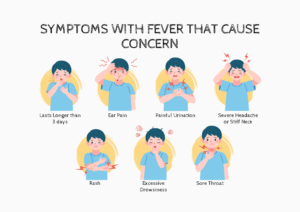Have you ever heard it said that “Fever is our Friend?” Despite popular opinion, fever is helpful to our bodies. It is simply a sign of an underlying illness, not an illness itself. Our bodies are designed to increase temperature in response to any insult that causes an inflammatory response, such as an infection.
Fever is defined as a temperature of 100.4 or greater. A rectal temperature is the best indicator of our body’s core temperature. Oral temperature is generally one degree less than our true core temperature, but it can be affected by recent intake of food or drink. Ear and temporal thermometers also measure core temperature but can be more variable than rectal temperatures and difficult to interpret. Axillary (or under the arm) temperatures are the least accurate, but easiest to obtain.
Regardless, fever should be viewed as a helpful response, not something to be feared. It causes the release of protective chemicals in our body and slows the growth of viruses and bacteria. So, the decision to give medicine to treat fever should be based on how your child looks and behaves, NOT on fever alone. If your child is acting fine, there is no need to treat the fever.
You may be wondering when a fever requires a visit to our clinic….
- Fever lasting longer than 3 days.
- Fever associated with stiff neck, severe headaches, or excessive drowsiness.
- Fever with pain in a specific body part such as ear, throat or painful urination.
- Fever with sudden appearance of a rash.
- Or any time you are uncomfortable about how you child looks or acts.
Credits: Adam, H. M. (2023). Commentary: Fever is Your Friend. Pediatrics in Review, 44(12), 701-702.
